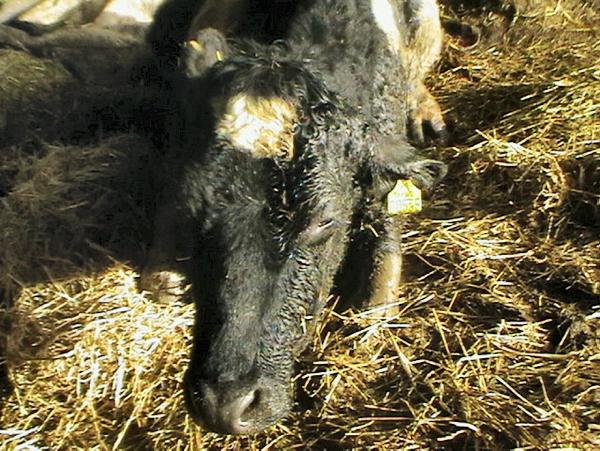Listeriosis is an infection of the hindbrain of cattle and sheep caused by the bacteria Listeria monocytogenes. As well as inflammation of the hindbrain, there is also a localised meningitis and involvement of some of the nerves that leave the hindbrain and innervate the head.
Listeria is a soil-borne bacterium and causes disease following ingestion by the animal. It is especially associated with cattle eating mouldy silage in winter. If the silage harvester picks up bits of soil during harvesting, there is usually poor fermentation around this, as well as the presence of Listeria. It can also occur at grass if cattle graze close to the ground or eat concentrates directly off the ground.
It is usually a disease of younger animals (under three years), as it is associated with tooth eruption and the emergence of the permanent molar teeth. During this period of tooth emergence, Listeria organisms can gain entry to the nervous system via the tooth canal and, from there, travel to the hindbrain where they lead to microabscessation (multiple small areas of infection).
This bacterium is also a common cause of eye disease in both cattle and sheep, as well as isolated abortions in pregnant cows.
Symptoms
Apart from dullness, which is a consistent feature, the symptoms of listeriosis depend on which particular nerves are involved in the infection.
Symptoms include a head tilt (Figure 1) and circling (hence, it is often called ‘Circling Disease’), as well as paralysis on one side of the face. This manifests as drooping of the ear and eyelid on one side (Figure 2), together with drooling of saliva out of the same side of the mouth.
Occasionally, animals can have difficulty swallowing, which dramatically diminishes the prospects for recovery. A high temperature is present in many early cases, but may not be present in advanced cases that have been missed for a few days.
Treatment
Early treatment with antibiotics, e.g. oxytetracycline or penicillin, will be effective in most cases. A long course of treatment is usually necessary, however, as relapses occur. In severe cases, it is often recommended to continue treatment for up to one week after the clinical symptoms have disappeared.
Supportive care, including housing and the provision of plenty of fluids, is an important part of therapy. Animals that cannot swallow will need to be stomachtubed with water and electrolytes to give them more time to respond to antibiotic treatments.
The prospects for complete recovery is fair (50% to 75%) if the affected animal is up and able to walk and swallow.
Control
The risk of listeriosis is much reduced by minimising the amount of potentially contaminated silage that younger animals are fed. This is done by actively discarding as much mouldy silage as possible.
At pasture, the risk is reduced by feeding animals from feed troughs rather than directly on the ground.
*This article was previously published in the Irish Farmers Journal in 2011 as part of a series on animal health.







 This is a subscriber-only article
This is a subscriber-only article











SHARING OPTIONS: